Dir. by David Lowery
In the interest of full disclosure I should acknowledge first that, although we’ve never met face-to-face, David Lowery and I have been exchanging emails for about three years now. I’ve long admired David’s writing, and, at the risk of speaking for him, I think we both recognized in the other a shared sensibility. Even before seeing a single frame of David’s first feature, I was rooting for it, curious to see what his style would look like when stretched to 85 minutes, and hopeful for him as well, both personally and professionally. This perhaps leaves me unqualified to be a true critic of the film, though I’d like to think that if I didn’t care for St. Nick, I’d have the integrity to say so — if for no other reason than because I believe David would be genuinely curious to hear the unvarnished truth.
I also want to mention up front that I hold an irrational bias against “child in peril” stories, so when I first read the plot synapsis — “The adventures of a brother and sister trying to survive, all on their own, out on the plains of Texas” — I worried that I’d be kept at some emotional or intellectual remove from the film. I’m happy to report that’s not the case.
The opening shot of St. Nick lasts for just under 90 seconds, the first minute of which is from a fixed camera position. Along with occasional, diegetic noises, the soundtrack also includes manufactured sounds — an unnatural wind and a synthesized drone of some sort (you can hear it in the trailer above). In combination, the sound and image, especially after the camera begins unexpectedly to dolly back, announce that St. Nick, despite its “regional” setting and digital video aesthetic, is a self-consciously authored film in the formal sense — more “Euro art house” than “American indie” (to borrow two marketing cliches); more The Sweet Hereafter (Egoyan, 1997) than Shotgun Stories (Nichols, 2007). Atom Egoyan is a surprising but useful point of comparison, I think. Lowery’s slow dollies over the wooden floorboards of the abandoned house where the brother and sister take refuge reads like a poignant homage to Ian Holm’s dream sequence in The Sweet Hereafter. There’s a sorrowful nostalgia in both shots.
And there’s a sorrowful nostalgia in both films, too, which points to the most interesting aspect of St. Nick: it’s point of view, which, while attaching itself most closely to the brother’s perspective, always remains just outside of it, in the same way that great children’s books usually do. I have no complaints about the look of St. Nick — particularly in the interior shots, Lowery and cinematographer Clay Liford make images that belie their small budget — but I couldn’t help but wonder how it would all look in rich black-and-white film. In a recent blog post, Lowery acknowledges that Night of the Hunter (Laughton, 1955) is a source of inspiration, and I was also reminded of To Kill a Mockingbird (Mulligan, 1962), both in the basic plot setup and in its careful, childlike attention to things — crayons, rolls of string, discovered bones, makeshift tools, matchbooks, and other bits of miscellania that kids collect and transform imaginatively in play. I use the word “things” deliberately, because one reason St. Nick avoids being the typical “child in peril” film is by observing the thing-ness of the objects without reducing them to symbols. Symbols require a doubled perspective — that of the filmed world, where a cigar is just a cigar, and that of the author, who winks knowingly at the audience, thereby inviting us to feel superior. It’s a recipe for sentiment and pity, neither of which, thankfully, are of much interest to Lowery. (I’ll resist the urge to quote Tarkovsky yet again on this site, although I think he’s also a useful touchstone for discussing this film.)
The best example is the way Lowery shoots the Texas plains. American “regional” cinema (again with the ironic scare quotes), especially that of the indie variety, has an unfortunate tendency to come off like tourism, in the sense that the camera is too often set up in front of objects that only reinforce our preexisting sense of the place. “The South,” for example, is often reduced to a now-vacant and picturesque block of what was once a small town’s main street before the interstate and Wal-Mart moved in. By comparison, I realized only a few minutes into St. Nick that I had no idea what the Texas plains looked like, especially not in winter (I assume), when the trees have dropped their leaves and taken on the aspect of a Tim Burton film or a Chris Van Allsburg book:
Lowery loves these trees, but there’s nothing explicitly symbolic in the way he shoots them. Rather, they’re true images of the particular place from which this particular story and its particular emotions sprung. And that, I think, is the source of the film’s lingering resonance. The nostalgia is Lowery’s, and because it’s true for him, it’s true for us as well.
(Apologies if that doesn’t make a damn bit of sense. The older I get, the less capable I am of articulating what it is I most admire about art.)
In an effort to write something that sounds a bit more like a film review, let me add this. First, the performances Lowery gets out of Tucker and Savanna Sears are something special. There’s very little dialog in the film, but when they do speak, each listens intently and reacts naturally and without self-consciousness. Perhaps the best compliment I can give to the young actors and the crew is to say that I was often reminded of those great films Haskell Wexler shot in the late-’60s and ’70s, when he’d hold his camera at a distance and just observe the performers, always managing to catch them just as the mask dropped. I’m also grateful to St. Nick for sidestepping a couple potential pitfalls. When the boy attempts to make serious conversation (and does so in a way that sounds an awful lot like a character in a movie attempting to make serious conversation), the girl diffuses the moment like all little sisters would — with a smile and a fistfull of dirt. And when Barlow Jacobs (Kid from Shotgun Stories) shows up briefly as the reluctant authority figure, Lowery allows him to be a well-rounded and recognizably real character. I was dreading that scene from the moment it became inevitable, but each time I’ve watched St. Nick it’s been among my favorites.
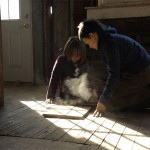
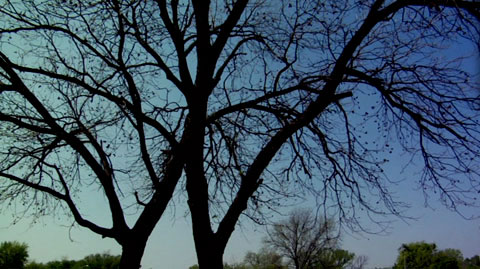
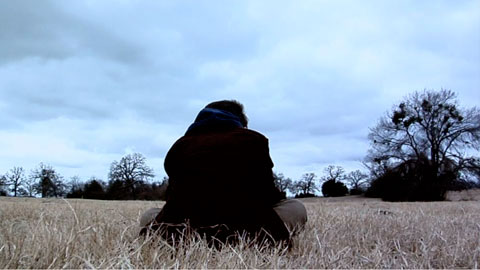
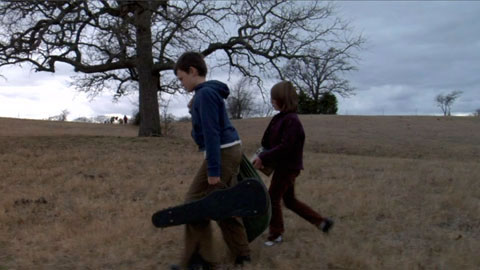
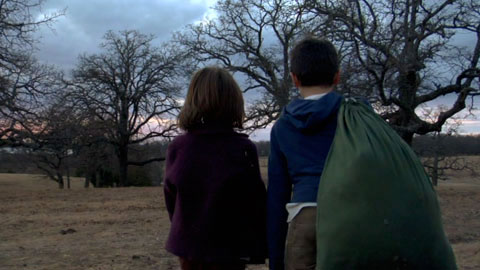
Comments
3 responses to “St. Nick (2009)”
I liked the trailer for St Nick – and I love the stills you posted. I wish I was going to SXSW this year, I’d love to see this film there
I’ll be keeping an eye on this film.
thanks for this, I’m going to SXSW and I saw the trailer and thought it looked interesting but usually I don’t trust trailers so I wasn’t sold. Now I’m definetly going to check it out. You have any other recommendations regarding films at SXSW?
The film would make a good short. But the terrible piercing sound design coupled with a lack of story led me to walk out an hour into it. I understand what he tried to do but it’s way to long. I don’t know how this film won AFI Dallas except for the fact that they were from Dallas… I saw all the films in the Texas Competition and have no idea why Desdemona didn’t win?! Or any other movie for that matter.